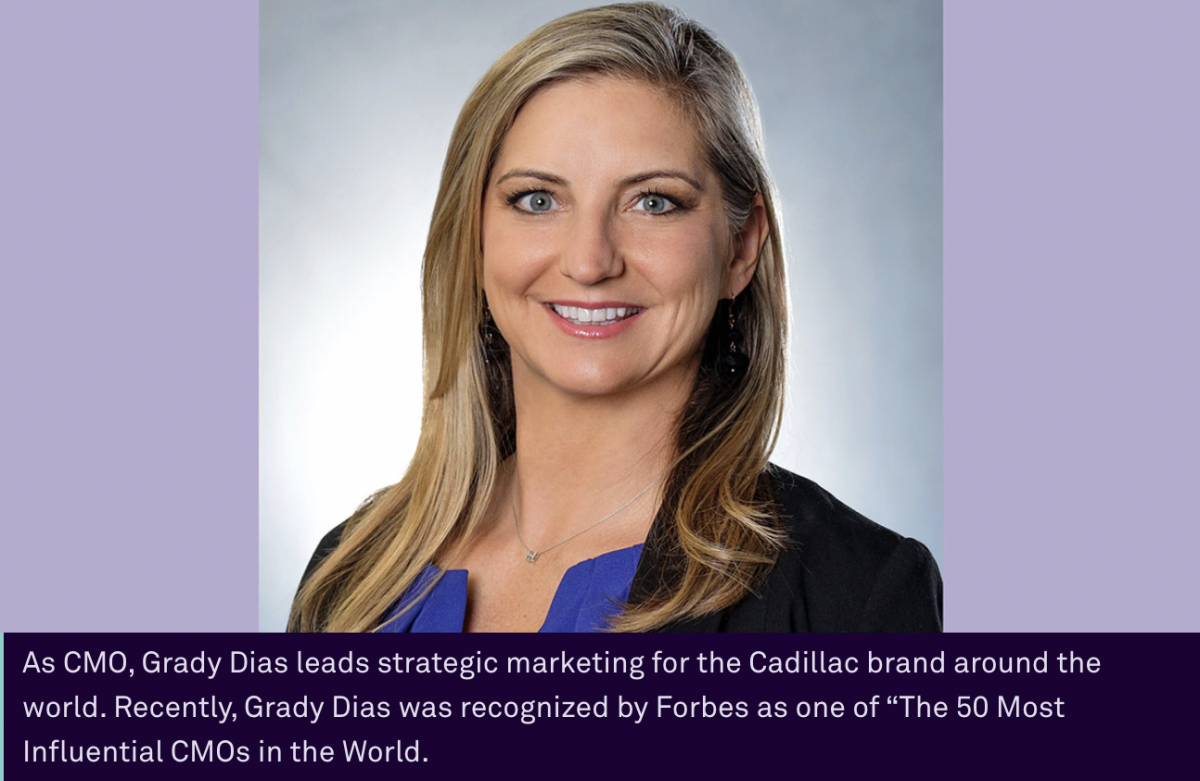Medill is hosting a networking reception on Sept. 19 at 5:30 in the Polaris Restaurant in the conference hotel. Join us! https://secure.ard.northwestern.edu/s/1479/02-naa/16/interior_no-utility.aspx?sid=1479&gid=180&pgid=46147&cid=80877


Medill is hosting a networking reception on Sept. 19 at 5:30 in the Polaris Restaurant in the conference hotel. Join us! https://secure.ard.northwestern.edu/s/1479/02-naa/16/interior_no-utility.aspx?sid=1479&gid=180&pgid=46147&cid=80877
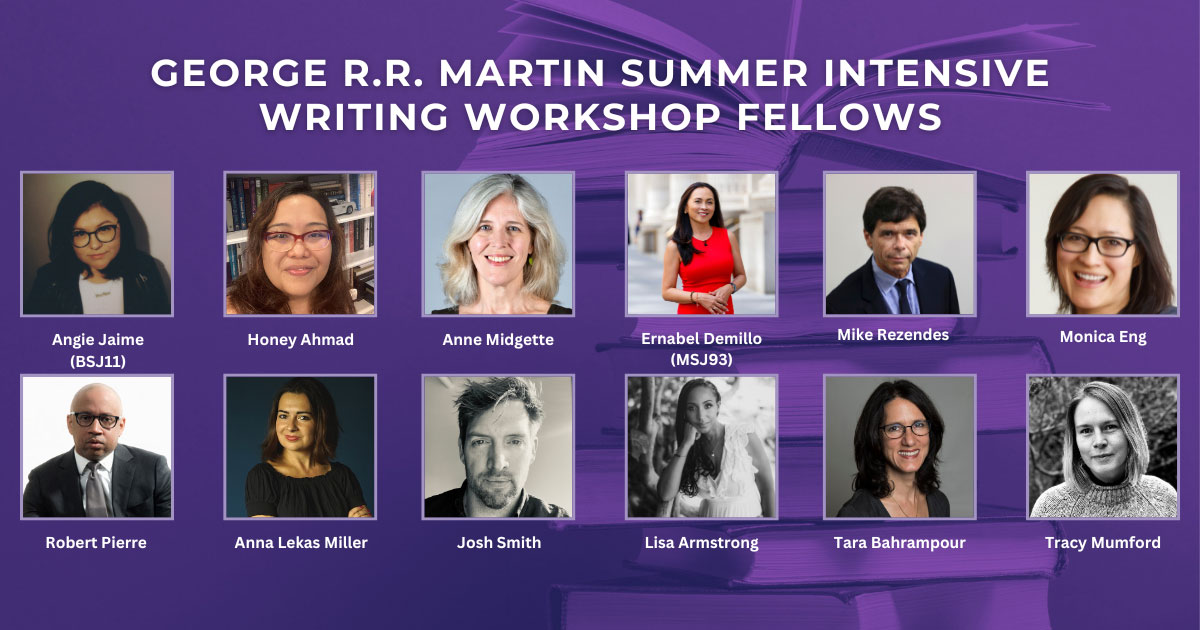
Twelve writers have been accepted into the inaugural George R.R. Martin Summer Intensive Writing Workshop at Northwestern University’s Medill School of Journalism, Media, Integrated Marketing Communications. The workshop will take place in Evanston in July.
Medill received almost 400 workshop applications from accomplished journalists around the world. The inaugural group of twelve fellows includes Pulitzer Prize, Peabody and Emmy Award winners, and journalists who have reported from war zones around the world, covered politics, food, classical music, religion, and more. They hail from the United States, England, Malaysia, and South Korea.
“I couldn’t have asked for a more talented and passionate group of writers for our inaugural workshop,” said Cheryl Lu-Lien Tan, senior lecturer and George R.R. Martin Chair in Storytelling. “Many are journalists who have wanted to write their first novel for years — several have toiled away on them in their spare time while working as full-time journalists.”
Over the course of the seven-day workshop, fellows will attend craft-focused classes on the various aspects of writing a novel, workshop their book chapters with instructors who are award-winning novelists themselves, attend firesides with visiting authors, have the opportunity to meet literary agents, and also have concentrated writing time.
“Medill is thrilled to be helping these journalists craft their first fiction stories,” Tan said. “We look forward to helping them share their debut novels with the world.”
Participants include:
 Ahmad is a Malaysian screenwriter, podcaster and food journalist. She was on the writing team for Emmy-nominated “Saladin,” Malaysia’s first fully-animated series. She has written and produced over 8,000 hours of food content, including a food drama series called “I Eat KL,” which the Asian Wall Street Journal called “a mouth-watering soap opera.” Ahmad’s first film that she co-wrote, “Motif,” featured a female cop on the trail of a small-town murder. She reimagined Walinong Sari into an animation short which has won film fest awards in LA, New York, Mexico, Chile and Japan. She also hosts the “Two Book Nerds Talking” podcast.
Ahmad is a Malaysian screenwriter, podcaster and food journalist. She was on the writing team for Emmy-nominated “Saladin,” Malaysia’s first fully-animated series. She has written and produced over 8,000 hours of food content, including a food drama series called “I Eat KL,” which the Asian Wall Street Journal called “a mouth-watering soap opera.” Ahmad’s first film that she co-wrote, “Motif,” featured a female cop on the trail of a small-town murder. She reimagined Walinong Sari into an animation short which has won film fest awards in LA, New York, Mexico, Chile and Japan. She also hosts the “Two Book Nerds Talking” podcast.
 Armstrong is an award-winning journalist and professor at the UC Berkeley Graduate School of Journalism. She has reported from several countries, including Sierra Leone, Kenya and the Philippines, and reported from Haiti from 2010 to 2014, through grants from The Pulitzer Center on Crisis Reporting and NYU. She has been featured on NPR and the BBC, discussing rape in the camps in Haiti and HIV/AIDS in the aftermath of the earthquake. Armstrong’s work has been published in The Intercept, the New Yorker and other outlets. She has produced and directed documentaries, including one for CBS News about the role that poor mental health care provided by for-profit companies has played in an increase in suicides in state prisons. She directed a documentary about a young man who was incarcerated in an adult prison when he was 16, which was featured in the Social Impact track at SXSW.
Armstrong is an award-winning journalist and professor at the UC Berkeley Graduate School of Journalism. She has reported from several countries, including Sierra Leone, Kenya and the Philippines, and reported from Haiti from 2010 to 2014, through grants from The Pulitzer Center on Crisis Reporting and NYU. She has been featured on NPR and the BBC, discussing rape in the camps in Haiti and HIV/AIDS in the aftermath of the earthquake. Armstrong’s work has been published in The Intercept, the New Yorker and other outlets. She has produced and directed documentaries, including one for CBS News about the role that poor mental health care provided by for-profit companies has played in an increase in suicides in state prisons. She directed a documentary about a young man who was incarcerated in an adult prison when he was 16, which was featured in the Social Impact track at SXSW.
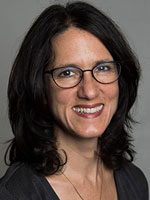
Bahrampour was a staff writer from 2004 to 2023 at The Washington Post, where she covered beats including immigration, education, aging and demography, and reported on war and political upheaval in North Africa, the Middle East, and the Republic of Georgia. She also has written for The New York Times, The New Yorker, Travel + Leisure and other publications, and has taught journalism at New York University and at the Georgian Institute of Public Affairs in Tbilisi. Bahrampour is the author of “To See and See Again: A Life in Iran and America,” a memoir about growing up in Iran, fleeing the Islamic revolution as a child and returning as an adult. Prior to becoming a journalist, she wrote short stories and vowed to one day return to fiction. She lives in Washington, D.C.
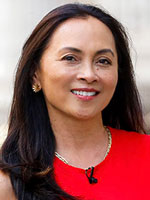 Demillo hosts and reports for CUNY-TV’s Emmy-award winning “Asian American Life.” Her work has received multiple awards, including an Emmy in 2020 for her short documentary on a Philippine-based feeding program. Prior, she spent a decade as a reporter and anchor on the Emmy-award winning FOX-5 morning news show, “Good Day New York.” Demillo was a reporter for the Orange County Newschannel in California and the CBS-affiliate in Sacramento. She is also a tenured journalism professor at Saint Peter’s University and now serves as chair of the Department of Communication and Media Culture. Demillo is the recipient of a grant from the New Jersey Civic Information Consortium in partnership with Slice of Culture to help fill the void of local news in Hudson County, New Jersey. She received her BA in Journalism and International Relations from the University of Southern California and her MSJ from Medill in 1993.
Demillo hosts and reports for CUNY-TV’s Emmy-award winning “Asian American Life.” Her work has received multiple awards, including an Emmy in 2020 for her short documentary on a Philippine-based feeding program. Prior, she spent a decade as a reporter and anchor on the Emmy-award winning FOX-5 morning news show, “Good Day New York.” Demillo was a reporter for the Orange County Newschannel in California and the CBS-affiliate in Sacramento. She is also a tenured journalism professor at Saint Peter’s University and now serves as chair of the Department of Communication and Media Culture. Demillo is the recipient of a grant from the New Jersey Civic Information Consortium in partnership with Slice of Culture to help fill the void of local news in Hudson County, New Jersey. She received her BA in Journalism and International Relations from the University of Southern California and her MSJ from Medill in 1993.
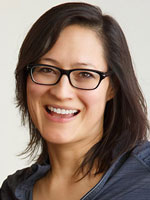 Eng is an award-winning, veteran Chicago reporter. She has worked in Chicago journalism for more than three decades starting at the Chicago Sun-Times and moving to the Chicago Tribune and WBEZ. She has served as an Axios Chicago reporter since the summer of 2021. Eng’s great-grandfather came to Chicago in 1911 and opened Chinese restaurants that served as the inspiration for her first attempt at fiction.
Eng is an award-winning, veteran Chicago reporter. She has worked in Chicago journalism for more than three decades starting at the Chicago Sun-Times and moving to the Chicago Tribune and WBEZ. She has served as an Axios Chicago reporter since the summer of 2021. Eng’s great-grandfather came to Chicago in 1911 and opened Chinese restaurants that served as the inspiration for her first attempt at fiction.
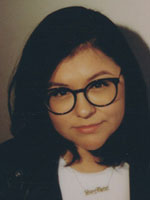 Jaime is the youngest daughter in a tight-knit family, as Mexicans from Guanajuato, of Otomi and Purépecha heritage, who share a legacy of post-colonialism and migration. She is a graduate of Medill whose work has been published by Teen Vogue, The Los Angeles Times, Vice, i-D and more. Most recently, she served as the first-ever Head of Creator Content for The Los Angeles Times. Through culture-shifting journalism, Jaime strives to create digital and physical spaces that are more civically engaged, accessible and reflective of the real world. Her work explores how communities at the margins survive and thrive in the Western world; and the ways cultural phenomena, art and technology can affect populations in disparate ways. Occasionally, she writes personal essays.
Jaime is the youngest daughter in a tight-knit family, as Mexicans from Guanajuato, of Otomi and Purépecha heritage, who share a legacy of post-colonialism and migration. She is a graduate of Medill whose work has been published by Teen Vogue, The Los Angeles Times, Vice, i-D and more. Most recently, she served as the first-ever Head of Creator Content for The Los Angeles Times. Through culture-shifting journalism, Jaime strives to create digital and physical spaces that are more civically engaged, accessible and reflective of the real world. Her work explores how communities at the margins survive and thrive in the Western world; and the ways cultural phenomena, art and technology can affect populations in disparate ways. Occasionally, she writes personal essays.
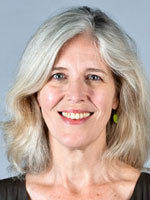 Midgette was the classical music critic of The Washington Post, where she established herself as one of the leading voices in her field. She also wrote on the visual arts and did significant work on #MeToo. Before the Post, she became the first woman to write classical music reviews on a regular basis for The New York Times where she contributed reviews and features on music and theater. A graduate of Yale University, Midgette started her career as a journalist during the 11 years she lived in Germany. She is co-author of “The King and I,” a candid book about Luciano Pavarotti written with his manager, Herbert Breslin, and “My Nine Lives,” written with the pianist Leon Fleisher, who lost the use of his right hand and then regained it three decades later. She is working on a historical novel about the woman who built pianos for Beethoven.
Midgette was the classical music critic of The Washington Post, where she established herself as one of the leading voices in her field. She also wrote on the visual arts and did significant work on #MeToo. Before the Post, she became the first woman to write classical music reviews on a regular basis for The New York Times where she contributed reviews and features on music and theater. A graduate of Yale University, Midgette started her career as a journalist during the 11 years she lived in Germany. She is co-author of “The King and I,” a candid book about Luciano Pavarotti written with his manager, Herbert Breslin, and “My Nine Lives,” written with the pianist Leon Fleisher, who lost the use of his right hand and then regained it three decades later. She is working on a historical novel about the woman who built pianos for Beethoven.
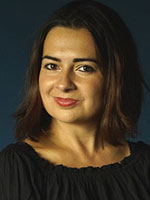 Lekas Miller is a journalist who began her work in Palestine, covering daily life under Israel’s occupation for The Daily Beast, before moving to Lebanon—and then Turkey and Iraq—to cover the Syrian civil war, the refugee exodus to Europe and the rise and fall of the Islamic State for Vanity Fair, Deutsche Welle and other publications. Her favorite stories center around love and romance, particularly the ones that show the way that love can flourish in even the darkest places. Her first book, “Love Across Borders,” is a collection of real-life love stories of people who have been displaced by conflict and separated by borders, fighting for their happily ever after in a world that is divided by passports and papers. She plans to write a novel that follows the emotional journey of a young Palestinian journalist navigating life in London while still being tied to the Middle East.
Lekas Miller is a journalist who began her work in Palestine, covering daily life under Israel’s occupation for The Daily Beast, before moving to Lebanon—and then Turkey and Iraq—to cover the Syrian civil war, the refugee exodus to Europe and the rise and fall of the Islamic State for Vanity Fair, Deutsche Welle and other publications. Her favorite stories center around love and romance, particularly the ones that show the way that love can flourish in even the darkest places. Her first book, “Love Across Borders,” is a collection of real-life love stories of people who have been displaced by conflict and separated by borders, fighting for their happily ever after in a world that is divided by passports and papers. She plans to write a novel that follows the emotional journey of a young Palestinian journalist navigating life in London while still being tied to the Middle East.
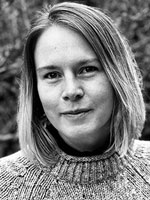 Mumford is a writer and podcast producer, currently bouncing between Minnesota and places closer to an ocean. She started in public radio and now produces a morning news show with The New York Times audio team. Her work in various mediums has won a Peabody Award — and fourth place at the Minnesota State Fair quilt competition (category 205). During the pandemic, Mumford sculpted eight wire-and-mortar tentacles bursting out of her front yard; they’re still standing. She is a graduate of the University of Chicago and the Salt Institute for Documentary Studies.
Mumford is a writer and podcast producer, currently bouncing between Minnesota and places closer to an ocean. She started in public radio and now produces a morning news show with The New York Times audio team. Her work in various mediums has won a Peabody Award — and fourth place at the Minnesota State Fair quilt competition (category 205). During the pandemic, Mumford sculpted eight wire-and-mortar tentacles bursting out of her front yard; they’re still standing. She is a graduate of the University of Chicago and the Salt Institute for Documentary Studies.
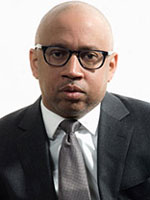 Pierre’s work centers the voices and lived experience of people and communities that have been historically marginalized. A former reporter and editor at The Washington Post, he was the initial impetus behind the 2006 groundbreaking series and later book, “Being A Black Man: At the Corner of Progress and Peril.” He was on the Metro reporting team that won the Pulitzer Prize for coverage of the Virginia Tech shooting massacre in 2007. Pierre is the co-author of “A Day Late and A Dollar Short: High Hopes and Deferred Dreams in Obama’s ‘Post-Racial’ America.” He owns Bald Cypress Media and has provided media solutions to clients including UNCF, the U.S. Centers for Disease Control and the Smithsonian’s National Museum of African American History and Culture. Pierre has taught at Dillard University, Georgetown University and Howard University. Pierre graduated from Louisiana State University.
Pierre’s work centers the voices and lived experience of people and communities that have been historically marginalized. A former reporter and editor at The Washington Post, he was the initial impetus behind the 2006 groundbreaking series and later book, “Being A Black Man: At the Corner of Progress and Peril.” He was on the Metro reporting team that won the Pulitzer Prize for coverage of the Virginia Tech shooting massacre in 2007. Pierre is the co-author of “A Day Late and A Dollar Short: High Hopes and Deferred Dreams in Obama’s ‘Post-Racial’ America.” He owns Bald Cypress Media and has provided media solutions to clients including UNCF, the U.S. Centers for Disease Control and the Smithsonian’s National Museum of African American History and Culture. Pierre has taught at Dillard University, Georgetown University and Howard University. Pierre graduated from Louisiana State University.
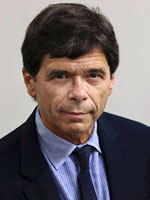 Rezendes is a Pulitzer-Prize winning journalist with the global investigations team at The Associated Press. His recent work includes an examination of child sex abuse in the Mormon Church and financial corruption in the Catholic Church. Rezendes is also a television writer, a screenwriter and a biographer. He is currently at work on a biography of the late Jimmy Breslin, the legendary New York reporter who gave voice to the powerless and helped create the New Journalism. Previously, he worked for The Boston Globe Spotlight Team where he shared two Pulitzer Prizes, one for revealing the cover-up of child sex abuse in the Catholic Church, and one for covering the bombing of the Boston Marathon. Rezendes was running the marathon when the bombs exploded and worked into the night covering the tragedy. In 2015, Rezendes was played by Mark Ruffalo in the Academy Award-winning movie, “Spotlight.”
Rezendes is a Pulitzer-Prize winning journalist with the global investigations team at The Associated Press. His recent work includes an examination of child sex abuse in the Mormon Church and financial corruption in the Catholic Church. Rezendes is also a television writer, a screenwriter and a biographer. He is currently at work on a biography of the late Jimmy Breslin, the legendary New York reporter who gave voice to the powerless and helped create the New Journalism. Previously, he worked for The Boston Globe Spotlight Team where he shared two Pulitzer Prizes, one for revealing the cover-up of child sex abuse in the Catholic Church, and one for covering the bombing of the Boston Marathon. Rezendes was running the marathon when the bombs exploded and worked into the night covering the tragedy. In 2015, Rezendes was played by Mark Ruffalo in the Academy Award-winning movie, “Spotlight.”
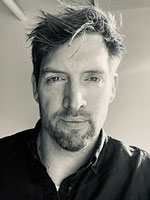 Smith is Reuters’ bureau chief in Seoul, where he oversees a team of more than 20 journalists covering both South and North Korea. He joined Reuters in 2016 in Afghanistan, then moved to Seoul amid the “fire and fury” of 2017. Smith went on to cover the Trump-Kim summits, lead a rare reporting trip to Pyongyang, and reveal the scale of North Korea’s pandemic border walls. First arriving in Kabul for the military affairs newspaper Stars and Stripes in 2013, Smith spent nearly five years chronicling the West’s attempts to extricate itself from the conflict and the increasing toll on the Afghan population. He has also reported on security affairs from Russia, Europe, Central Asia and Iraq, where he accompanied Shi’ite militias to the frontlines of the battle against Islamic State militants, and in 2019 he reported on the Hong Kong protests, including from inside the occupied Polytechnic University.
Smith is Reuters’ bureau chief in Seoul, where he oversees a team of more than 20 journalists covering both South and North Korea. He joined Reuters in 2016 in Afghanistan, then moved to Seoul amid the “fire and fury” of 2017. Smith went on to cover the Trump-Kim summits, lead a rare reporting trip to Pyongyang, and reveal the scale of North Korea’s pandemic border walls. First arriving in Kabul for the military affairs newspaper Stars and Stripes in 2013, Smith spent nearly five years chronicling the West’s attempts to extricate itself from the conflict and the increasing toll on the Afghan population. He has also reported on security affairs from Russia, Europe, Central Asia and Iraq, where he accompanied Shi’ite militias to the frontlines of the battle against Islamic State militants, and in 2019 he reported on the Hong Kong protests, including from inside the occupied Polytechnic University.

Republished from the Chicago Tribune
Alfred Borcover was the Tribune’s travel editor in the 1980s and ’90s, a time when travel sections were a robust element of Sunday newspapers and writers covered the globe in search of interesting stories.
“Back in the day, Al took readers to places near and far with an easygoing style that made them feel that they were his traveling companions,” said Carolyn McGuire, a retired Tribune associate Travel editor. “Between assignments he was always available to give advice to anyone who asked how to beat jet lag or the best hotel to stay in — you name it.”
Borcover, 92, died of natural causes on Jan. 24 at the Warren Barr Lieberman long-term care facility in Skokie, said his wife of 34 years, Linda. A longtime Evanston resident, Borcover had been battling a range of health issues and had been in hospice care.
Born Alfred Seymour Borcover in Bellaire, Ohio, Borcover was the son of a Russian-born father and a mother who had immigrated to the U.S. from Austria. He received a bachelor’s degree from Ohio State University in 1953 and then served for two years in the U.S. Air Force, where he was a first lieutenant and served in Morocco and at a radar station in Maine, his family said.
In 1957, he received a master’s degree in journalism from Northwestern University’s Medill School of Journalism. Two years later he joined the Tribune, briefly as a reporter before becoming a copy editor.
Borcover joined the Tribune’s Travel section in 1963 and for the next 10 years was an assistant travel editor, while also writing long articles about various destinations. His first Travel section article, published July 1963, took readers to Vilas County, in north-central Wisconsin, which he described as a “scenic wonderland of 1,300 lakes and thousands of acres of towering forests.”
Borcover’s stories included a focus on affordable rail travel while he also visited far-flung locales such as Tunisia and Israel. During this time he provided the content for “Arthur Frommer’s Dollar-Wise Guide to Chicago,” which was published in 1967. Tribune book critic Clarence Petersen called it “authoritative, well-written, fascinating and up-to-date,” and a book “to remind us natives of some of the attractions of home.”
A series he developed in 1976 on Bicentennial travel destinations, including Yellowstone National Park, the Arizona desert, Glacier Bay in Alaska and the Grand Canyon, was awarded a Certificate of Appreciation from the American Revolution Bicentennial Administration.
Borcover was named the Tribune’s Travel editor in 1979. In addition to leading the section and assigning stories to writers, he continued to file reports from around the world and also wrote a weekly column.
In 1986, he broke a story about scams that had been launched in Chicago by sham vacation brokers who took consumers’ fees but then denied them trips on the dates they desired. Ultimately the brokers were targeted by the Federal Trade Commission and sued by the state attorney general’s office before the state General Assembly passed legislation cracking down on such travel promoters.
Borcover continued focusing on travel scams, and his columns were distributed around the country through Tribune wire services.
“Though he was based here in Chicago, his syndicated stories and columns traveled as widely as he did,” said Randy Curwen, who succeeded Borcover as the Tribune’s Travel editor. “As a travel writer, editor and columnist, Al certainly knew his way around the world. And everybody in the travel world knew Al.”
In addition to basic information on destinations such as maps and costs, Borcover offered personal observations in his stories.
“What struck me … was that I didn’t feel as if I were in South America,” Borcover wrote in March 1983 on a trip to Buenos Aires. “The city’s ambience and architecture — from the colorful Italian district of La Boca with its brightly painted homes to the grandiose scale of Avenida 9 de Julio — were definitely European. The undiluted ethnicity of the few gracious residents I had met, and others I overheard, left me with the quick impression that this melting-pot country had not melted as in the U.S. Language of origin had not been buried, but preserved.”
Retired Tribune foreign correspondent R.C. “Dick” Longworth recalled Borcover’s “always upbeat and good-natured” personality.
“Al was one of the nicest guys in the Tribune newsroom,” Longworth said. “He was also a real pro, a graceful writer and a fine editor whose own sense of fun and adventure infused the paper’s Travel section.”
After visiting 60 countries, Borcover stepped down as Travel editor in 1993 and retired from the Tribune in February 1994.
“People always ask: What’s your favorite place?” Borcover wrote in his farewell column. “I never have an adequate answer. There are just too many places in the world to love, and I’m not finished seeing all that I want to see. There’s no end in sight.”
Borcover continued to write about travel for another 17 years as a freelancer, including a biweekly column for the Travel section.
Shortly after his final byline in the Tribune in 2011, Borcover began volunteering at O’Hare International Airport with Travelers Aid, working at an information desk.
“He loved volunteering to work on the travel desk at O’Hare, and would go every week, for a time, to sit at that desk in one of the terminals and offer advice and help to travelers,” said former Tribune correspondent Storer “Bob” Rowley, a longtime friend.

Michelle Edgar has built a career at the intersection of social impact, entertainment, sports, fashion, and culture. As a connector and founder, she has worked closely with talent, management, brands, and business leaders to ideate, strategize and build impactful marketing campaigns. As a strategic marketing executive with an emphasis on driving value for IP, talent and brands, Michelle has launched talent-focused global campaigns on behalf of both brands and agencies.
In December, she joined the Compton Unified School District as the senior director of business partnerships and schools bringing programs, resources and funding to the district across entertainment, arts, sports, technology and STEM. Last fall, she joined the Santa Monica Arts Commission as living a life of service and helping shape community across a city landscape is a priority along with creating opportunities for all ages and stages and walks of life. This month January, she will be an adjunct professor at Northwestern Law teaching a Sports Law course on Endorsements, Name Image, and Likeness for college athletes. She additionally is a SBJ correspondent.
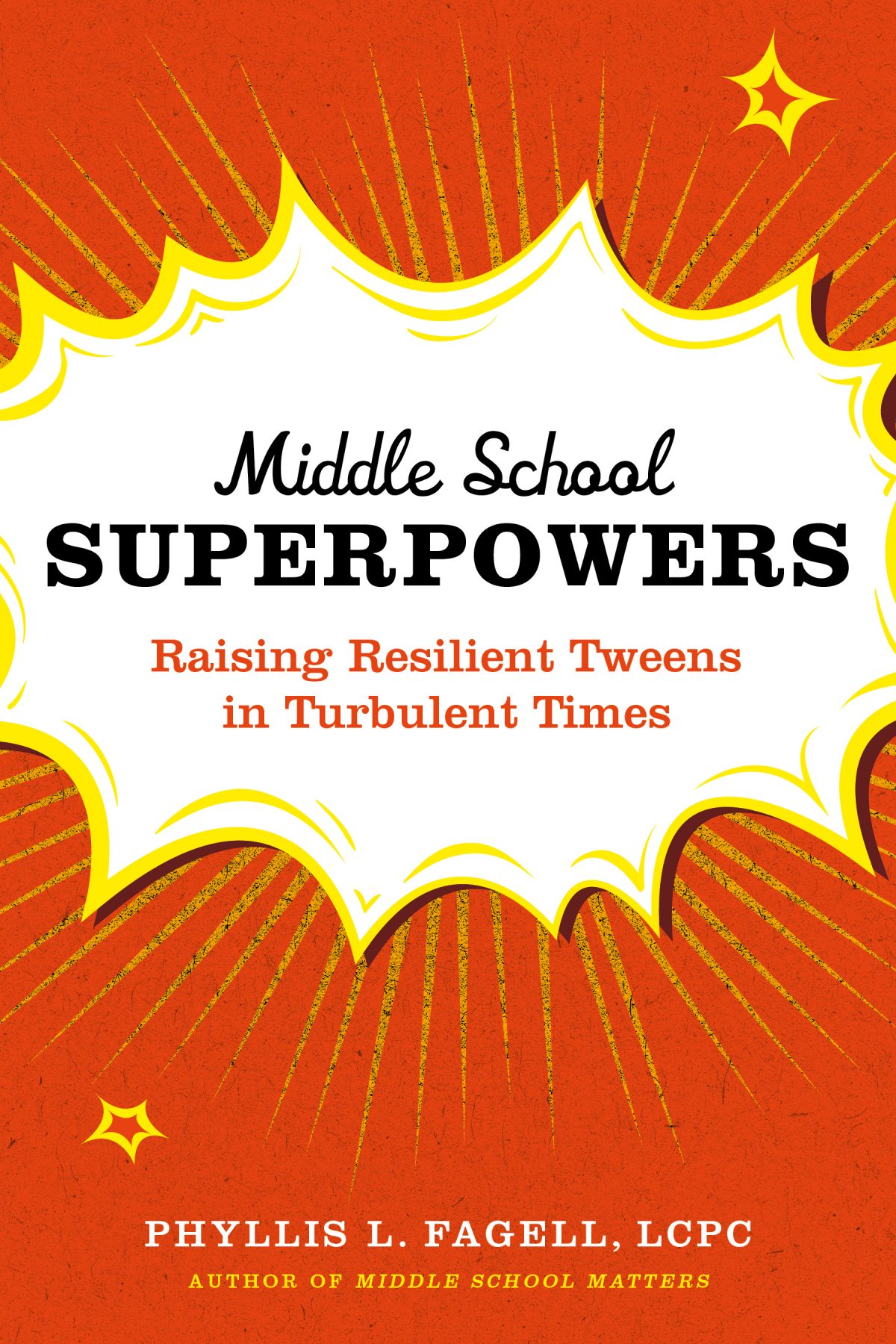
Phyllis Fagell (MSJ98)
Middle school can be one of the toughest times in a kid’s life—for them and for their parents and educators. It’s filled with transitions, upheaval, and brand new experiences that can be overwhelming and intimidating. But licensed clinical professional counselor Phyllis Fagell has put together a practical, evidence-based, and compassionate guide for parents and educators to help their tweens through most challenging situations.
“Middle School Superpowers” teaches middle schoolers how to activate the 12 superpowers they need to discover their strengths and navigate tough decisions and disappointment: Flexibility * Belonging * Sight * Bounce * Agency * Forcefield *
Security * Healing * Vulnerability * Daring * Optimism * Balance
Whether they lose a friend, get cut from a team, make a mistake on social media, bomb a test, struggle with negative body image or identity-related issues, or feel weighed down by societal problems, these “superpowers” will help them find their place and thrive. Middle School Superpowers is the key to raising confident, self-aware, independent, and resilient kids who can recover from any setback—now and in the future.

Kim Shine (MSJ13)
“On the Other Side of Everything” is about living life and controlling your own destiny. The poetry in this book ranges from love, anxiety, loss, freedom and empowerment. Inspired by personal events, each poem will entice readers to revisit and embrace their own experiences. This book encourages readers to live life in the best way — by being present, grateful and authentically you.
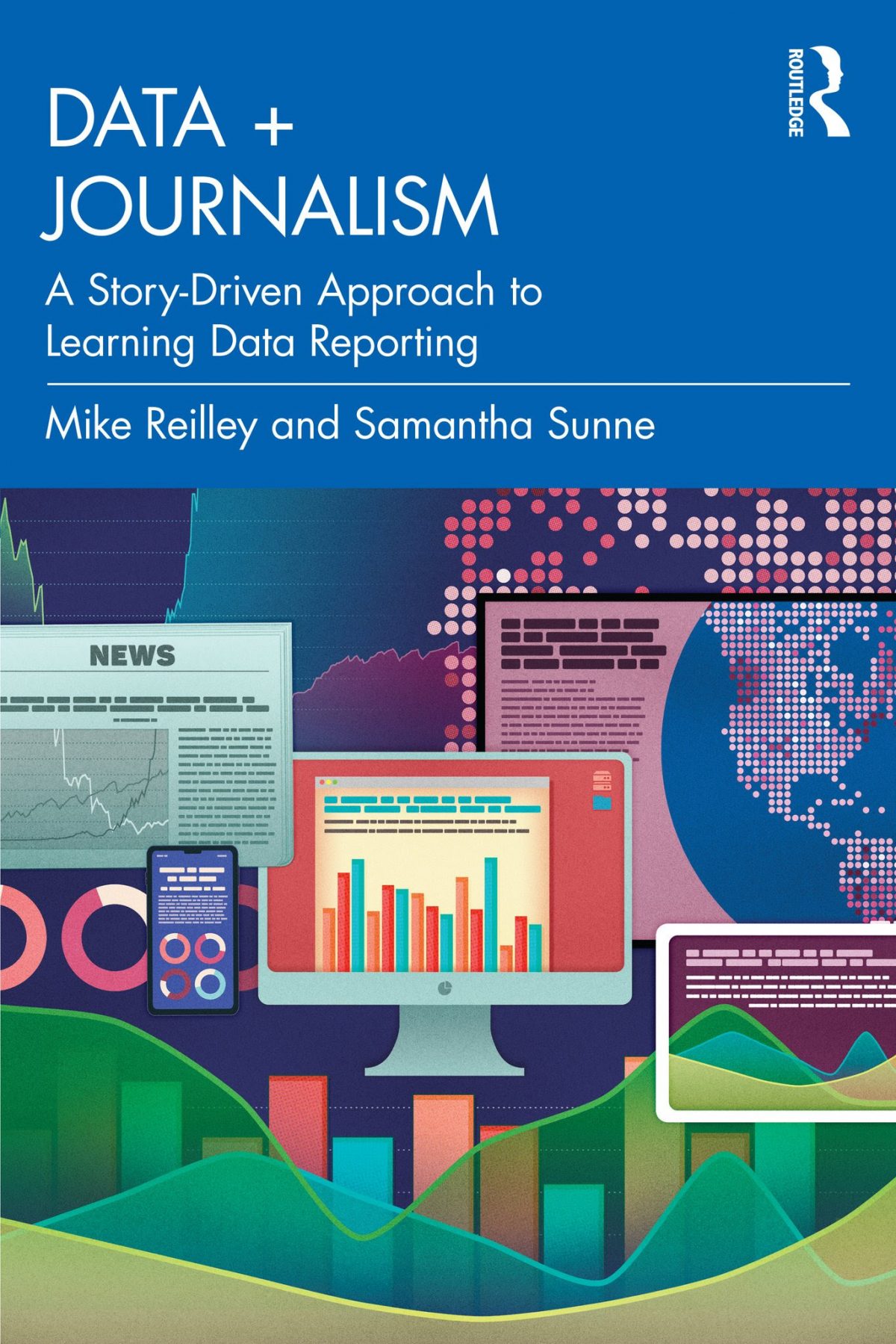
Mike Reilley (MSJ95)
Mike Reilley co-authored this introductory textbook and newsroom handbook that teaches data journalism techniques as a process. The book features exercises, tips, best practices and training videos on how to find data, capture it, then clean, analyze and visualize it. It features interviews and work from leading data journalists around the world. Available December 2022 at Routledge.com
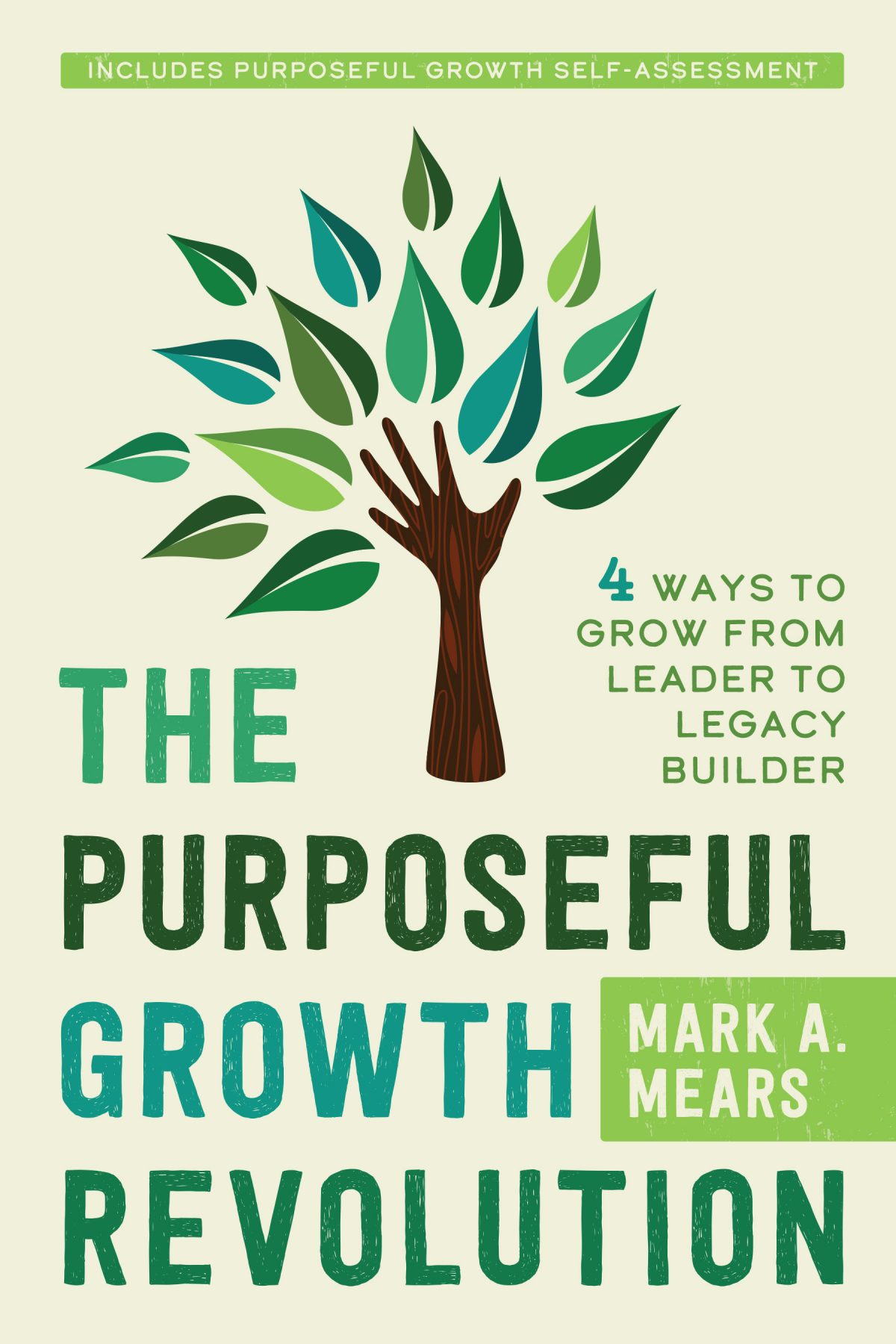
Mark Mears (IMC85)
Today we are facing the “The Great Resignation.” People are resigning from the workforce or, possibly worse, resigning themselves to an unsatisfying status quo and being disengaged at work. They’ve quit…but stayed. Neither outcome is “great.”
Mark A. Mears prefers to redefine this era as “The Great Repurposing”—an opportunity to focus on what (and who) really matters most to create deeper meaning in our life and work.
In The Purposeful Growth Revolution, Mears shares a wealth of personal experiences as a C-Suite executive, relevant examples of best practices, and insights from research and subject matter experts to unveil his revolutionary 4 LEAF GROWTH model based upon “The Higher Power of 4s.”
In this book, you will learn to apply 4 holistic and revolutionary processes found in nature to help individuals, teams, and organizations find purpose, fulfill their true growth potential, and leave a living legacy—what Mears calls paying it backward. All designed to fulfill Purposeful Growth, Purposeful Self, Purposeful Work, and a Purposeful Life.
The world of work is changing—on purpose. Are you ready to grow into yours?
The Purposeful Growth Revolution is on!
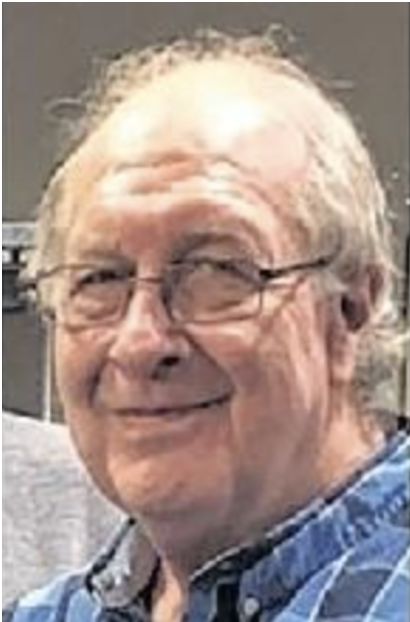
Kevin McDonald Lamb, 71, was born on Oct. 1, 1951, in St. Paul, Minnesota, and died peacefully on Oct. 30 at Oak Creek Terrace rehab center in Kettering. Kevin was the beloved husband of Carol Lamb, loving father of Courtney Goubeaux and the late Ryan Lamb, father-in-law of Robin Lamb and Justin Goubeaux, and grandfather of Payton, Griffin and Zooey Lamb. He was the dear brother of Larry (Carole) Lamb, Chris (Lesly) Lamb, Jenni (Dale) Allard, and Becky Lamb. Kevin is also survived by many dear relatives and friends. He was preceded in death by his parents Bob and Jean Lamb, and in-laws Tony and Mary Matusin.
Kevin’s lifelong passion for sports took him to The Milwaukee Journal, Newsday and The Chicago Sun Times as a sportswriter. He was hired to cover the Brewers right out of college at Northwestern University, a first for the Journal. He also covered the Chicago Bears, which took him to yearly NFL playoff games and Super Bowls, the highlight being the 1985 Bears Super Bowl win over the Patriots. He wrote several books and contributed to Sports Illustrated and NFL Properties, among other publications. He joined the Dayton Daily News as an investigative reporter, and later became the Health and Medical reporter. Along the way, Kevin won several local and national awards. A Gathering of family and friends 10 am until service time with a Celebration of Life service planned for 11 am, Saturday, Dec. 3, at Tobias Funeral Home, 5471 Far Hills Ave., Kettering, 45429. To send a condolence, visit www.Tobias-funeral.com.
